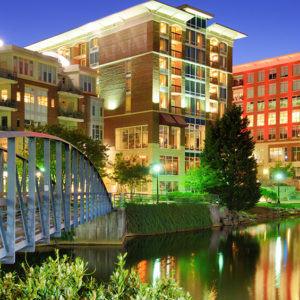Greenville, South Carolina, is all the rage these days. Businesses are flocking to the Upcountry, drawing new residents from all over the United States. Visitors and locals stroll on the city’s tree-lined Main Street and along the paths in Falls Park on the Reedy River. The restaurant scene has become a draw for foodies from near and far. They even have a Red Sox farm team with a scaled-down version of the Green Monster in left field.
On a recent visit my wife and I were surprised to come upon 89 “unknown” soldier graves just off Main Street — each with an undisturbed, small Confederate flag standing next to it. Nearby, on Main Street, stands a tall pedestal supporting a larger-than-life statue of a Confederate soldier. A few feet away is a small memorial to Robert E. Lee. Near the stadium there is also a statue of Shoeless Joe Jackson, another bad actor, though I suspect most of the locals believe he was innocent.
Earlier in the day we passed a handsome monument on Main Street celebrating the students of Sterling High School who, in the 1950s and 1960s, demanded an end to segregation of Greenville County’s public schools. Elsewhere in Greenville is the A.J. Whittenberg Elementary School commemorating the leader of a legal effort to desegregate the county schools. Whittenberg’s daughter Elaine was one of a handful of students who demanded admission to the previously all-white Greenville Junior High School in 1964.
A dozen decades earlier Greenville was a Unionist stronghold, but by 1860 had joined the secessionists. Although the town saw little action in the Civil War, its young men paid the price to which the graves off Main Street testify. The inscriptions on the commanding Confederate memorial speak to their personal sacrifices in defense of the only home and way of life they ever knew.
Greenville is also the home of the Upcountry History Museum in which the history of South Carolina’s western region is documented. Like any place in the South, it is a history of settlement, westward expansion, expropriation of Indian lands, slavery, war, reconstruction, segregation and now a half-century of slow but steady progress toward full democratic equality. The museum presents that story objectively, with neither celebration nor condemnation. Exactly what a history museum should do.
Altogether our little tour of Greenville left us feeling like the people of this beautiful southern town have got it just about right in this age of growing racial tension. The Confederacy is not celebrated nor its defeat lamented, but the young boys who died are honored, albeit in the anonymity imposed by war. The young black students who were denied equal access to education and opportunity are recognized for their determination and sacrifices. The good and bad of Greenville’s history are laid bare for visitors and those who now make their lives in this lovely town.
This is not to say that there has not been controversy. In the spirit of protesters across the country, Fighting Injustice Together held a 2017 rally demanding removal of the Confederate monument. The city took refuge in a state law that requires a two-thirds’ vote of the state’s General Assembly to remove a monument memorializing a historical figure. The protesters’ claims of emotional hurt from the presence of such monuments were made less convincing when one of the group’s leaders, Travis Greene, acknowledged that he didn’t know there was a Confederate memorial in the city until recently.
Also on Greenville’s Main Street is a statue of former mayor Max Heller who is credited with leading the revival of this old mill town. He was, we are told, a forward-looking man. So it seems is Greenville. Its history is what it is. Its future is bright.

